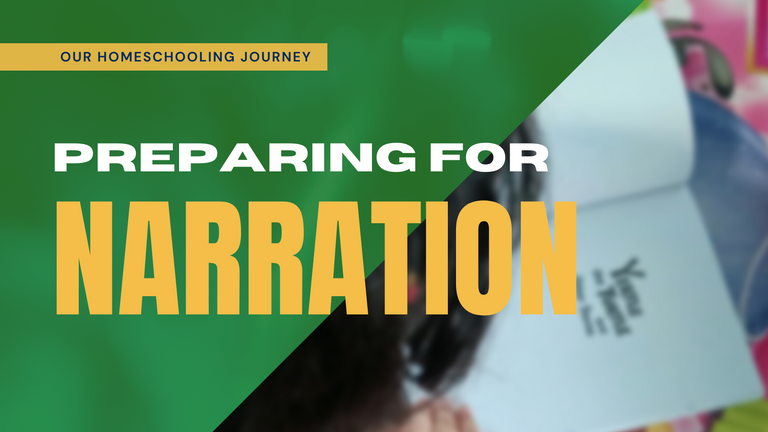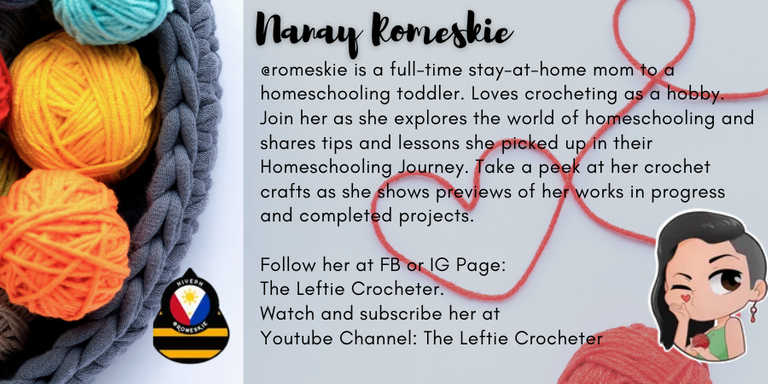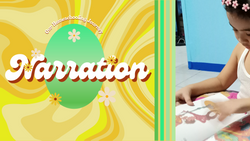
Homeschooling can be a fun-filled experience, packed with lots of opportunities for learning, with an extra bonus of having more time spent with our little ones. All one has to do to make homeschooling effective is to have the right tools for learning. In my previous post, I shared the several benefits of using narration as a tool in our homeschooling journey. And like I've mentioned, it has been extremely helpful and effective in keeping learning fun and lovable both for me and my kid.
Narration though is not as easy as it looks. I had to also experience it myself. Whenever I read a book, I try retelling myself. I have full understanding of how hard it is to process everything I read, then try retelling it the way I remember and understood it. You could also give it a try. But before you do, let me share to you a few things you need to remember when narrating.
Prepare for the reading and narration.
This includes reading the story beforehand. Check for words that your kid may have a hard time understanding and provide definitions (may be done by context and does not need a dictionary-based definition.) Also take note of new characters that will be introduced in the story. This proved to get my daughter even more excited about our reading.
I used to discuss the vocabulary words before we begin our reading but it got my kid distracted during the reading because instead of focusing on the story itself, she was on the lookout on when the words we discussed will be mentioned. She only gets back to listening attentively once the words have been used in the story. Just play it by ear, see what fits you and your kid.Ensure continuity.
Before starting the day’s reading, provide continuity by asking the child what they remembered from the previous day’s reading. It doesn’t need to be fully detailed; it just needs to provide a bridge from yesterday’s story to todays. My kid and I currently have our noses on Harry Potter and the Sorcerer’s stone. Before starting out a new page for the day, I would always ask her ”Do you remember where we were?” And that’s enough to refresh us of our journey to Hogwarts.Use a timer
Remember that a child’s ability to focus is very limited. And it will not be helpful if we force them to, we’ll just end up bumming them out, hence bumming us out. Reading, and learning should be fun for both parties. To avoid tiring each other out, make use of a timer when trying out narration. I started with 5 minutes. That already includes the reading and the narration part. We started with just a few sentences at a time. Overtime, we added a few minutes into our reading time until we reached the 20-minute reading time for each subject. You could be surprised at how much discussion you can do within 20 minutes.
We are using living books in discussing our topics. Right now, I am teaching her Philippine History using the book A Lolong Time ago. Each chapter is rich in information and there is really a lot to process. Maintaining the 20-minute threshold not only helps with her focus and attention, but it also gives her enough space to digest all the information we read in the book.Do not repeat any passage while reading.
One more way to develop the habit of attention amongst kids is to not repeat any part of the passage they missed. When reading aloud to my daughter, there are instances that her thoughts wander off. To remedy this, I cut the reading to just a few sentences at a time, then I have her retell. But there are still instances when she’s not too focused and asks me to repeat something while I read because she missed it or did not hear it. It’s hard at first, but I tell her that we don’t really repeat the reading, we need to focus and pay attention, so we don’t miss anything important. It takes a lot of getting used to, but this is a very important habit to teach to children: paying attention.Narration should be done right away.
The reason why narration is very effective is that because when kids retell what they heard or read or saw, they start to own that knowledge. Their brain starts to absorb that information, they translate it to us the way they understood it. They start thinking and asking questions about it. And when that happens, they develop a deeper understanding of the topic. They ask questions related to the topic, sometimes realizing the answers on their own, and later, keeping that information in their minds for a long time. Retention is achieved.
It is important though that they narrate as soon as they heard the story. Strike while the iron is hot, as they say. In narration, while the information is raw and fresh, the kids should be given the opportunity to retell it right away. Otherwise, the information will be lost.Do not interrupt the narration
Let the kid feel free to express themselves. Narration should be freestyle. When they start to retell, they should do it at their own pace, and they should never be interrupted. Some reasons we as parents would feel the need to interrupt is when they use the wrong grammar, or if we see that they are not telling the story in the correct order, or if we feel that they are doing it wrong. Just let the kid speak up. It doesn’t matter if they used the wrong tense, or if they start at the end, then moved to the beginning, then ended in the middle of the story. They are just kids, and they are just learning things. What is important is that they do not lose their train of thought. Just let them go with their thought flow and let them finish.As much as possible, steer away from asking who, what, where, when, and how.
When narrating, our goal is for the child to develop high level thinking skills. First by having them pay attention, then learning to put the events in order, and then owning knowledge. We can lead the narration by asking indirect questions like ”what do you think…", "can you imagine…", "how would you feel… etc.” This way, they don’t feel too stressed out in trying to remember, but they feel the book with their emotions, they develop opinions according to what they heard, and they start to care about the reading. Asking direct questions is just like quizzing them. Children are not supposed to be quizzed. They are supposed to have fun while learning.Provide corrections ONLY after the child has narrated.
Not because we did not interrupt them doesn’t mean we don’t correct them. Although at my daughter's age, I’m not too crazy about grammar. Not yet at least. When my kid fails to mention something important in the story, I mention that to her. And that sparks another point of conversation for the two of us. This way, the kid doesn't feel too guilty of making a mistake. They are kids, they're allowed to make mistakes and our responsibility is to correct them in the way that they do not feel embarrassed about it.Have a lively and fun discussion.
When I first started homeschooling, my mind was set to creating learning materials, making learning aids that will keep the kiddo happy, entertained, and motivated in learning. It turned out I didn’t need any of those. Well, I sometimes still do, but nowadays, we very rarely use it. All we needed was to have a lively, engaging, and fun discussion of ideas. Our Nature Studies is one of our best and most discussed lesson even long after our study time. Not only does she remember the topics and birds we discussed from months ago, she was also excited about the next topics we will be discussing.
Now that you know how to prepare for narration, I strongly encourage you to try it out. It can be daunting at first, but believe me, it gets better. Once you get the groove in having your kid retell the lessons or stories, it becomes a habit for the child to stop, recall, and analyze the information being given to them. They are empowered because they learn a lot while feeling heard and paid attention to. Remember, our children are not empty baskets that just needs to be filled with endless information. They are persons with their own sets of personalities and characteristics, capable of analyzing things that they see, hear or read.
There are different ways that a child can narrate. On my next entry for this Narration as a learning tool series, I will share to you the different ways of narration that me and my kid has used as well as the other narration techniques that I am looking into using soon.
Check out my previous blog post about Narration:





Wow....Great learning tools. I found this so very helpful. Thanks alot for sharing
Thank you! I hope it also helps you in your homeschooling or learning.
You're doing great, mamsh! Glad you immediately found a method that works well for you. Congratulations!
Thanks mamsh! Nakahanap na rin ako ng provider na pasok sa values na pinahahalagahan namin.
One of the most active nanays I've known @romeskie. You really are a wondermom. It's not easy to teach a child at home.
Aww. Thanks. Though I couldn't be as active as before here in the platform. Everything seems to be happening all at once. But it's all good. Thank you for dropping by.
You're welcome☺️.
Hi @romeskie, your post has been upvoted by @bdcommunity courtesy of @rem-steem!
Support us by voting as a Hive Witness and/or by delegating HIVE POWER.
JOIN US ON
Thank you!
Congratulations @romeskie! You have completed the following achievement on the Hive blockchain and have been rewarded with new badge(s):
Your next target is to reach 65000 upvotes.
You can view your badges on your board and compare yourself to others in the Ranking
If you no longer want to receive notifications, reply to this comment with the word
STOPCheck out the last post from @hivebuzz:
Ate Romelyn!!!!!!! 😁😁😁
Oiiii! Kala ko kung sinong tiredmomma! Hahaha
Yan kasi gamit ko sa noise ate di ko na iniba. 😁